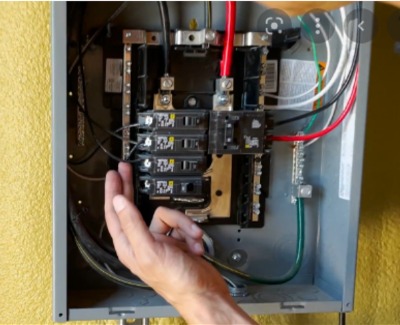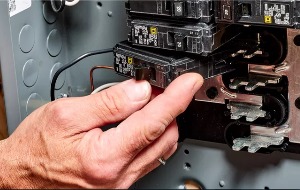
When a circuit breaker trips repeatedly, some homeowners think of how to replace the breaker.
However, a breaker can trip for many reasons, such as circuit overload, grounds fault, short circuit and sometimes a bad circuit breaker.
You will need to confirm from a professional electrician that your breaker is bad before changing it.
But if you are sure that your breaker has gone bad, this article will help you replace it.
In this article, you will learn the signs of a faulty circuit breaker, and how to replace a bad breaker.
What are the signs of a bad breaker
The following signs may mean that a circuit breaker has gone bad.
- Frequent tripping.
- If it cannot reset
- If it cannot trip when necessary.
- A circuit breaker that is always hot.
- If it has a burnt smell.
While these signs may mean that your circuit breaker may have broken down, call a professional electrician to confirm it by checking the voltage level using his multimeter.
Once it is confirmed dead, replace the circuit breaker with a new one.
Required Tools and materials
- Wire stripper
- Screwdriver
- Flashlight
- Personal protective equipment like gloves and google
- A new circuit breaker.
How to replace a bad breaker
Once you have confirmed that the circuit protector is bad, follow these steps to replace it.
1. Turn off the main circuit breaker.
Turn off the main breaker that controls all the branch circuit breakers in the house. This is to make sure there is no current flow along the circuit.
Though some professionals change the circuit breaker without turning off the main power, switch it off for safety reasons.
While turning off the receptacle, apply safety measures as you never know if explosions will occur.
Stand by the side of the breaker panel and also look away, or wear your safety google for eye protection. Also, make use of your flash light since the light is already off.
- Test the wires with a multimeter or tester to make sure they are dead
Remove the cover plate from the breaker panel
Using your screwdriver, remove the screws holding the cover plate, and be careful not to allow the cover plate to fall on the ground.
Remove the old breaker that needs to be replaced

Once you have removed the panel cover, locate the faulty breaker and flip the reset lever to turn it off.
Straighten out the black insulated wire connected to the breaker from the side of the panel, grip the edge of the breaker, and pull it out.
Disconnect the wires connected to the old circuit breaker
Loosen the screw terminal of the breaker and remove the black wire attached to it.
Note: When replacing a 240 volt breaker, it usually comes with two hot wires, unlike 120 volt breakers.
Disconnect those wires and remove the old breaker.
Connect the wires to the new breaker
Before connecting the wire to the new breaker, reset the lever to the OFF position.
Insert the black circuit wire into the screw terminal and tighten it. On some circuit breakers, this terminal is usually labeled as LOAD or LOAD POWER.
If you are replacing a GFCI or AFI breaker, connect the white neutral wire to the provided terminal on the breaker.
Install the new breaker
Push the back of the new circuit breaker into the holder clip and make sure it fits into the bus bar in the panel.
If there is an excess wire after the installation, fold it and keep it inside the space on the breaker panel.
Replace the panel cover and turn ON the power
Once you are through with the installation, replace the panel cover and tighten the screws.
Turn off all the circuit breakers in the breaker box before switching on the main breaker. This will prevent sudden high power demand from the device when you turn ON the main breaker.
If you might have switched off the branch circuits, turn ON the control switch and then the branch circuits.
Can I replace the circuit breaker without turning off the power supply?
Yes, you can replace a bad circuit breaker without turning off the control switch, however, it is risky.
But for any reason that makes you embark on that, make sure you protect yourself. Wear your personal protective equipment, such as your boots, overall, and hand gloves.
Also, never you work in a wet environment because water is an excellent conductor of electricity.
Related post